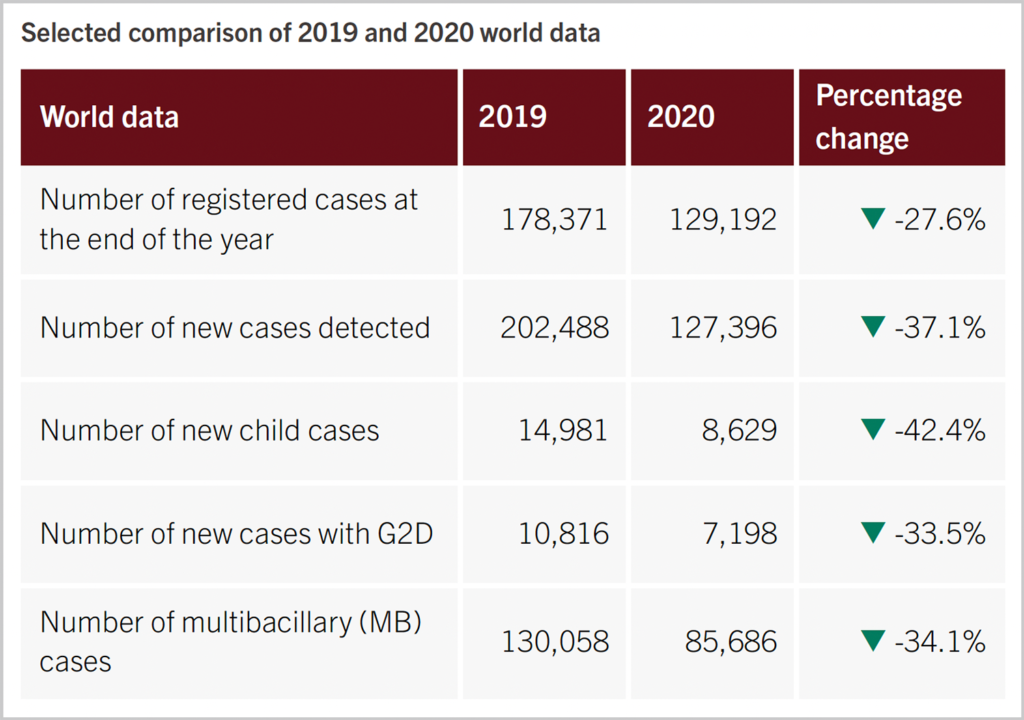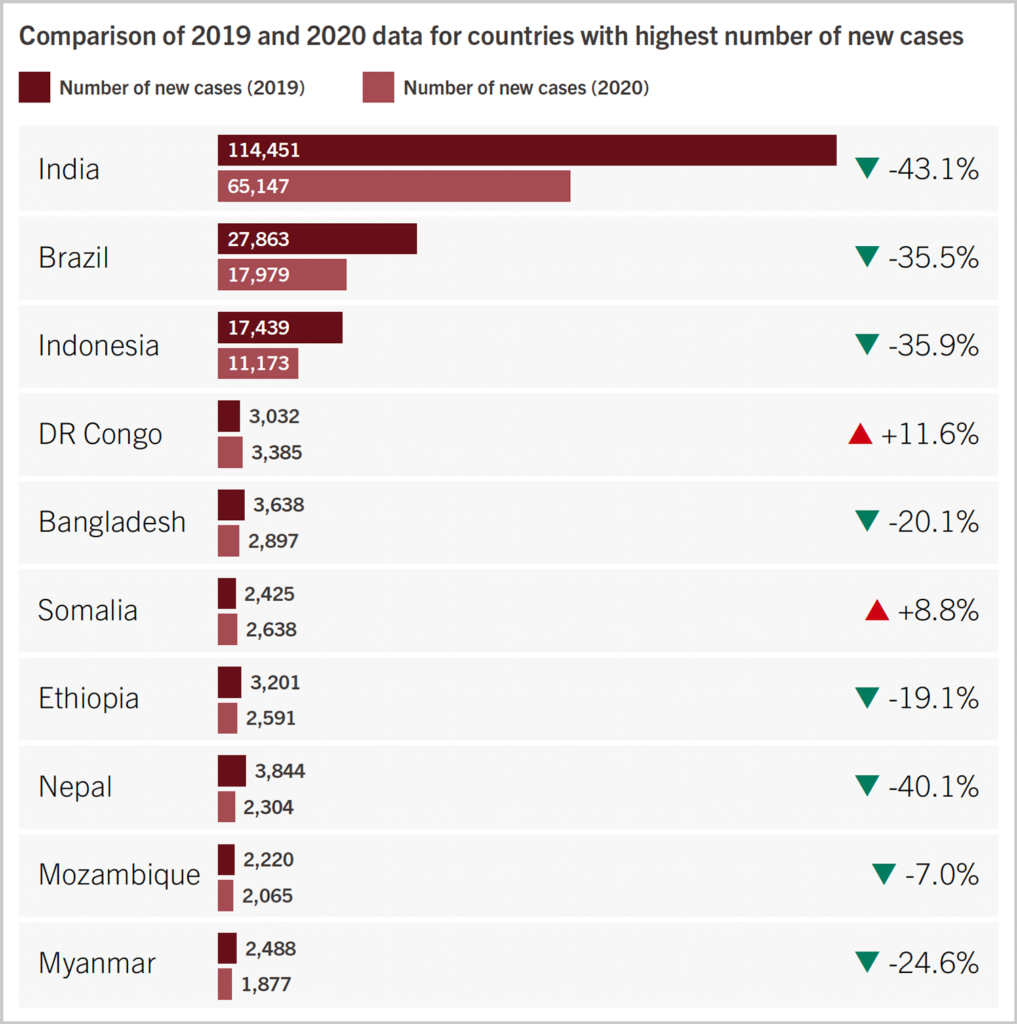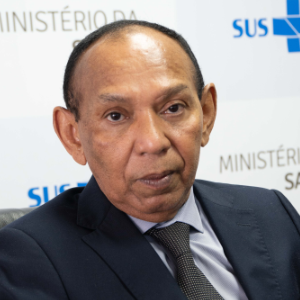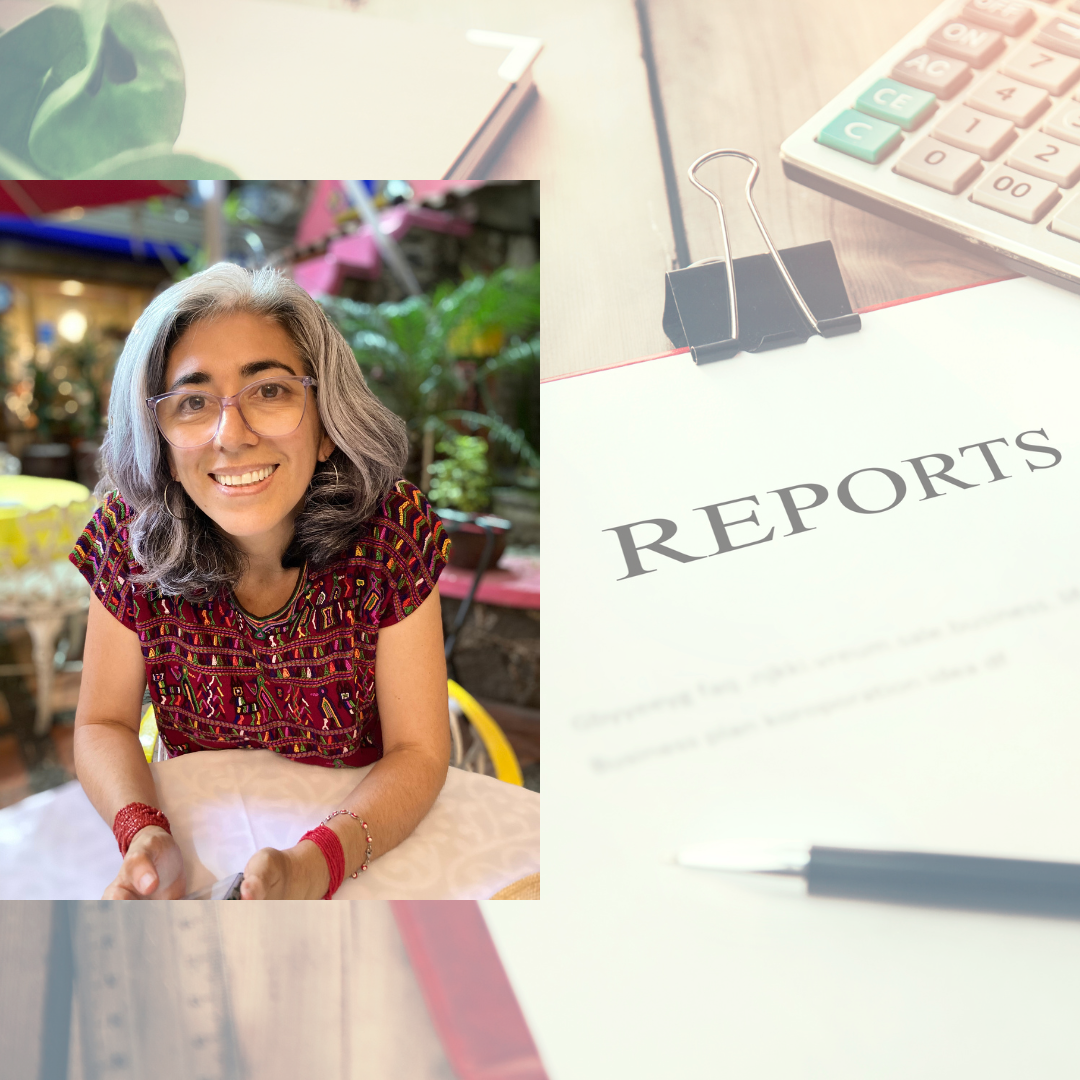Every year, the World Health Organization (WHO) receives official data on leprosy from national programs in member states worldwide. For the calendar year 2020, WHO received data from 127 countries, including all 23 global priority countries. WHO released a report on this data in September 2021 [1].
Interpret data indicating reduction in 2020 with caution
In 2020, health services everywhere experienced extra burdens and disruptions because of the COVID-19 pandemic. WHO’s report states that lower numbers (see table at below) reflect operational factors rather than an underlying epidemiological shift and warns that the interruption in case detection related to such operational factors as reassignment of staff and cessation of community-based activities may result in hidden cases and an increase in grade 2 disabilities (G2D). The data should be interpreted with caution, especially when calculating long-term trends.
New case detection in global priority countries
New cases detected in the 10 countries with the highest number of cases (see chart at below) account for 112,056 cases or 88% of all new cases globally. For most of these countries, the number of new cases detected in 2020 was significantly lower than the number in 2019. DR Congo and Somalia were exceptions: both countries detected more new cases in 2020 than in 2019. Somalia’s revitalized national program detected over 2,000 new cases both years, which is a notable sustained increase in comparison to 107 cases detected in 2015. In recognition of challenges faced by national leprosy control programs in the context of the COVID-19 pandemic, WHO has developed and published two guidance documents to assist with decision-making about whether and how to proceed with essential services and critical activities such as active case-finding [2], [3].
[1] World Health Organization, “Global leprosy (Hansen disease) update, 2020: impact of COVID-19 on global leprosy control,” Weekly epidemiological record 96, no. 36 (Sept. 10, 2021): 421-444, https://www.who.int/publications/i/item/who-wer9636-421-444.
[2] World Health Organization, “Considerations for implementing mass treatment, active case-finding and population-based surveys for neglected tropical diseases in the context of the COVID-19 pandemic” (July 27, 2020): 1-8, https://www.who.int/publications/i/item/WHO-2019-nCoV-neglected-tropical-diseases-2020-1.
[3] World Health Organization and the United Nations Children’s Fund, “Community-based health care, including outreach and campaigns, in the context of the COVID-19 pandemic” (May 5, 2020): 1-39, https://www.who.int/publications/i/item/WHO-2019-nCoV-Comm_health_care-2020.1.







